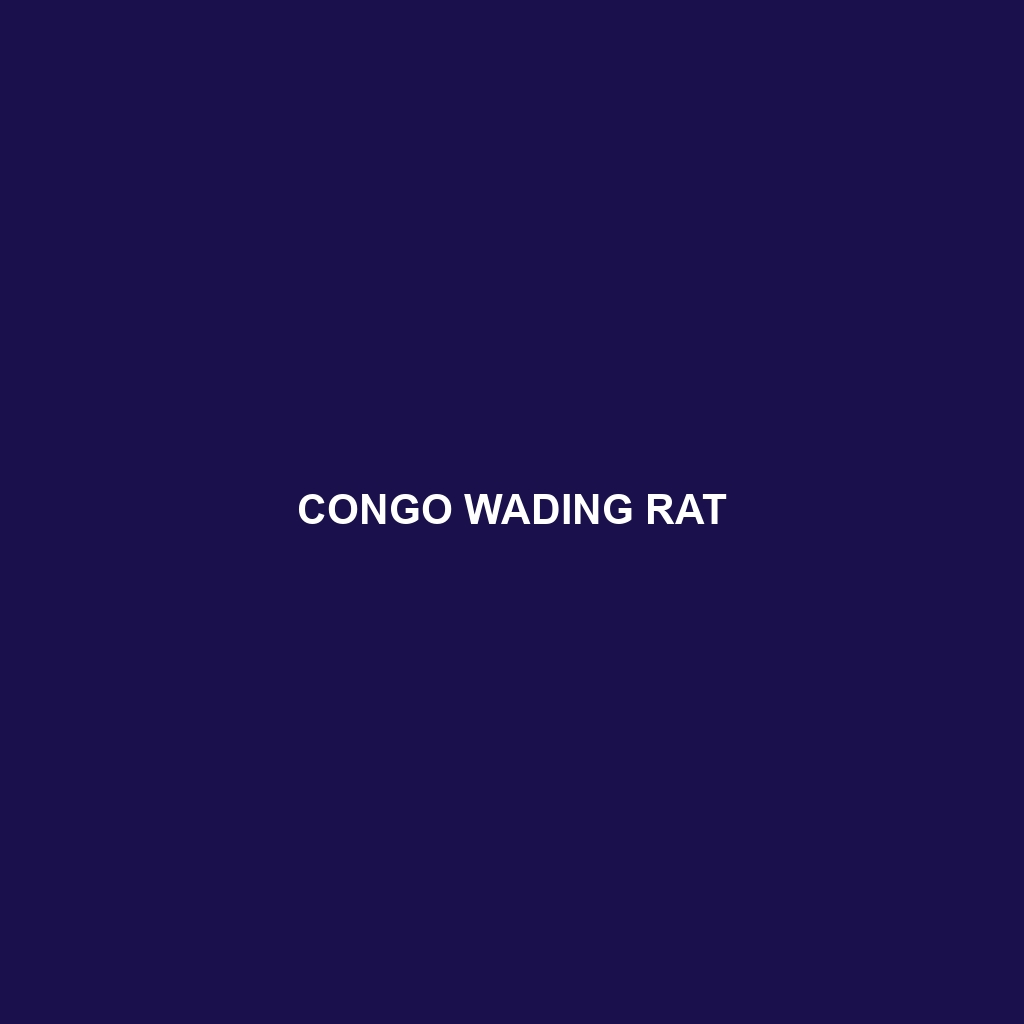Congo Wading Rat
Common Name: Congo Wading Rat
Scientific Name: Dasymys incomtus
Habitat
The Congo Wading Rat primarily inhabits the wetlands, marshes, and riverbanks of the Congo Basin in Central Africa. This species thrives in environments with abundant vegetation, such as reed beds and riverine forests, indicating a preference for areas that offer both cover and access to water. Key geographic locations include parts of the Democratic Republic of the Congo and the Republic of the Congo.
Physical Characteristics
The Congo Wading Rat is a medium-sized rodent, typically measuring between 25-30 centimeters in length, excluding the tail. It has a robust body covered with coarse, dark brown fur, which provides excellent camouflage in its natural habitat. Notable features include long limbs and webbed feet, adaptations that enhance its swimming capabilities. The ears are relatively large, aiding in acute hearing, while the tail is long and scaly, often used for balance.
Behavior
This species is primarily nocturnal, becoming active during the night when it forages for food. The Congo Wading Rat is known for its swimming prowess and often forages in water for seeds, roots, and aquatic plants. Socially, they tend to be solitary but can often be seen in pairs or small groups during mating season. Their habitat preference also leads to behaviors such as burrowing and nesting among dense vegetation, making them less visible to predators.
Diet
The diet of the Congo Wading Rat consists mainly of herbaceous plants, seeds, and aquatic vegetation. They are known to feed on a variety of root systems and are particularly fond of the young shoots of grasses found in their wetland habitat. This rodent’s feeding habits greatly contribute to seed dispersal in its ecosystem, which aids in plant community health.
Reproduction
The reproductive season for the Congo Wading Rat generally occurs from late rainy season through early dry season. Females typically give birth to 2-5 young after a gestation period of about 30 days. Offspring are born altricial and require extensive care and feeding. Notably, parental care is shared between both male and female rats, which is an interesting behavior among rodent species.
Conservation Status
The Congo Wading Rat is currently classified as vulnerable due to habitat loss caused by deforestation and wetland drainage. Conservation efforts are essential to mitigate these threats and to preserve their remaining habitats.
Interesting Facts
One fascinating fact about the Congo Wading Rat is its remarkable adaptation to an aquatic lifestyle, which allows it to thrive in wetland environments. Their ability to swim and dive underwater for food distinguishes them from many other rodent species. They are also known for their high adaptability to changing environmental conditions.
Role in Ecosystem
The Congo Wading Rat plays a significant role in its ecosystem as both a herbivore and prey for larger predators. By contributing to seed dispersal, it supports plant growth and biodiversity in its habitat. Additionally, its burrowing can impact soil quality and structure, which in turn influences water infiltration and vegetation patterns in wetland areas.
